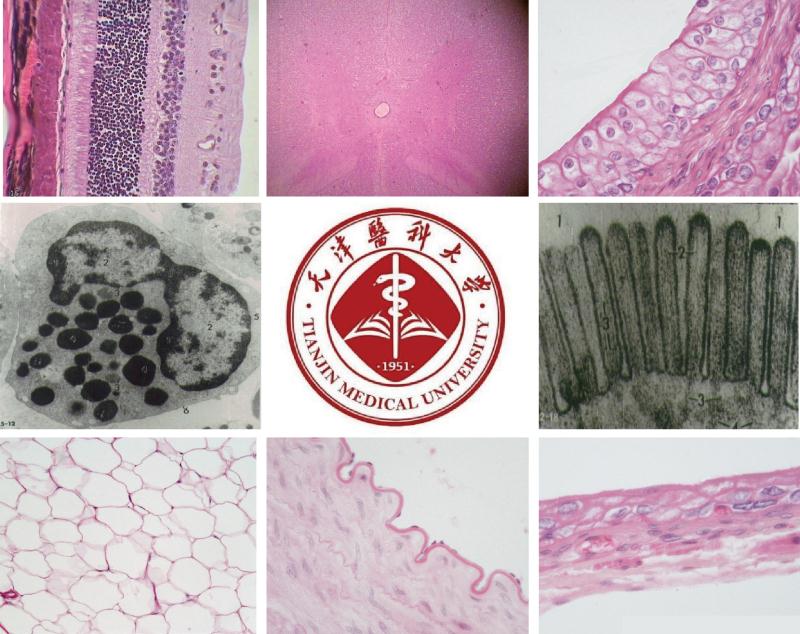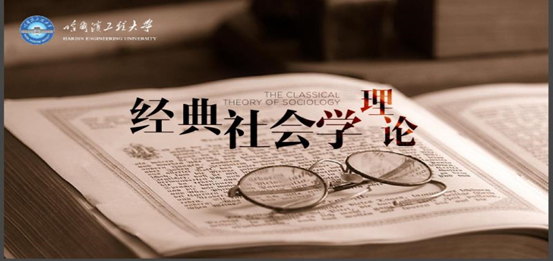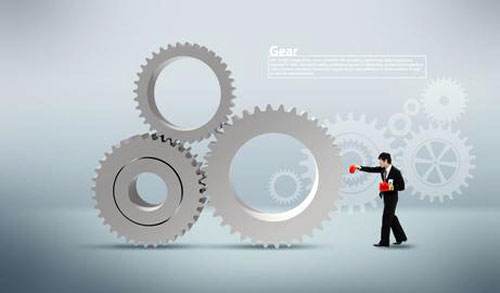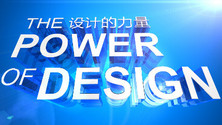
当前课程知识点:History of Western Civilization 全英文西方文明史 > Chapter 6 Renaissance and Reformation > 6.1 The Renaissance > 6.1.1 Text
返回《History of Western Civilization 全英文西方文明史》慕课在线视频课程列表
6.1. The Renaissance 14 to 17th century
Hi, now we start a new chapter, chapter 6: Renaissance and reformation.
The first part is The Renaissance, if we say the Dark Age is dark, and now we can see the light, the light from the title, the light is the Renaissance.
1. Modern history
The modern history has three periods; we see the classical antiquity, the Middle Ages and the Modern Period. Modern Period can be further divided into the early modern period, the late modern period and Contemporary history.
The early modern period began in the early 15th century including the Renaissance, the Age of Discovery and the Protestant Reformation. The late modern period began in the mid-18th century, including the French Revolution, the American Revolution, the Industrial Revolution, the Great Divergence, the Russian Revolution and the two World Wars. And the Contemporary history started from the 1945 the end of the Word War II until today.
Early Modern Europe
What marked the beginning and end of the early modern Europe? Historians have different answers including the Fall of Constantinople in 1453, the end of the Wars of the Roses in 1487, the beginning of the High Renaissance in Italy in the 1490s, the voyages of Christopher Columbus in 1492, or the start of the Protestant Reformation in 1517. The dates of its end including the start of the French Revolution in 1789 and beginning of the English Industrial Revolution in late 18th century
2. The Italian City-states
Now let’s look at the Italian city-states
Since the 11th century Italy was divided into numerous rival city-states and territories. Fifteenth-century Italy was one of the most urbanized areas in Europe. By 1500, seven of the ten largest cities in the west were in Italy. Through shipping, commerce and banking, the city-states in the northern and central Italy rose to great prosperity, laying the groundwork for modern capitalism. There were 5 powers in Italy.
We can see the duchy of Milan, republic of Venice, and the republic of Florence, Papal state, and Kingdom of Naples.
Republic of Florence and the Papal States at the center. Florence was the center of Renaissance culture, one of the wealthiest cities in Europe. It was ruled by banking family the Medici. Duchy of Milan to the north, it was landlocked, and the most warlike, ruled by the Visconti family. Venice was the leading maritime power of that time.
The 5 powers often fight with each other. To better understand rivals or allies they started sending resident ambassadors to each other. This was considered the emergence of diplomacy.
3. The Renaissance
Renaissance is a French word means "rebirth" for an Italian cultural movement from 14 to 16th century. The Renaissance humanist all loved the classical culture and hoped its rebirth. The Renaissance is the cultural bridge between the Middle Ages and earlier modern period history. The Renaissance is the cultural bridge between the Middle Ages and modern history. It started in Italy and later spread to the rest of Europe, marking the beginning of the Early Modern Age.
Renaissance Humanism
Renaissance humanism is the study of classical antiquity. Humanist stressed the importance of the classic texts of the ancient Greece and Rome. Petrarch revered rhetorician Cicero above all others. After the fall of Constantinople in 1453, Italy became the center for Greek studies as Byzantine scholars fled the Ottoman Empire and came to Italian cities. After the fall of Constantinople in 1453, Italy became the center for Greek studies as Byzantine scholars fled the Ottoman Empire and came to Italian cities.
Humanists studied not only theology but grammar, rhetoric, moral philosophy, and history, they were not antireligious but emphasize the value of human beings, and they celebrated the worldly achievements. At that time the church remained the center of people’s spiritual life but a growing sense of civic pride and individual accomplishment were underlying characteristics of the Italian Renaissance
4. Petrarch 1304-1474
This is Francesco Petrarch, a great scholar and poet, known as "Father of Humanism" and "father of the Renaissance". He regarded the classical Greco-Roman world is the golden age and after the golden age until his own time is a "dark" age. This is why the middle ages also called the Dark Ages. Petrarch was born in the Tuscan city of Arezzo in 1304. Dante was a friend of his father. Petrarch was "the first tourist", traveled widely in Europe. During his travels, he collected Latin manuscripts. In 1345 he discovered a collection of Cicero's letters; this discovery is often considered the start of the Italian Renaissance. He was a devout Catholic and didn’t see a conflict between humanism and religious faith.
5. Renaissance Art including architecture, sculpture, and painting. The early Renaissance is a period from 1400 to 1490s. Let’s look at four masters from this period. All of them were from Florence.
Brunelleschi 1377-1446 was a great architect, was one of the founding fathers of the Renaissance. He is famous for developing a technique for linear perspective in art. His most famous work is the dome of the Florence Cathedral, the largest brick dome in the world.
6. Donatello c. 1386-1466 was a great sculptor. He studied classical sculpture and developed a complete Renaissance style. Donatello was a great sculptor. He studied classical sculpture and developed a complete Renaissance style. He led the revival of equestrian statue; equestrian means a man riding on the horseback. His bronze statue is Judith Slaying Holofernes, His bronze statue is Judith Slaying Holofernes, based on the story from the Old Testament of the Bible, Judith was a daring and beautiful Jewish widow he killed an invading Assyrian general. This work symbolized the spirit of Renaissance, love of liberty and hatred of tyranny. We can see the details of this hat of this heroine.
7. Masaccio 1401-1428 was the first great painter of the Italian Renaissance. He died at only 26 but left many masterpieces with Christian themes. He was one of the first to use linear perspective in his painting. The Expulsion from the Garden of Eden and Holy Trinity
8. Botticelli 1445-1510 was a painter belonged to the Florentine School under the patronage of Lorenzo de' Medici. He favored mythological subjects, sensitive portraits and bright colors. His famous works are Birth of Venus, and Allegory of Spring,
9. Allegory of Spring.
10. Trinity of great masters of High Renaissance
Trinity means a group of 3 people. High Renaissance is a period from the early 1490s until the sack of Rome by the troops of the Holy Roman Emperor Charles V of Spain in 1527
This is Leonardo da Vinci 1452-1519 born in Florence. He is a polymath of the Renaissance. Polymath is a person of great and varied learning. Da Vinci is a master in many areas including painting, sculpting, architecture, science, music, mathematics, engineering, literature, anatomy, geology, astronomy, botany, writing, history, and cartography. His dozens of secret notebooks filled with drawings of inventions, observations and theories. He was the first man to design the parachute, helicopter and tank. He is regarded the "Universal Genius" or "Renaissance Man".
11. 15 of his paintings have survived. the Mona Lisa is the most famous portrait in the world.
12. And his fresco The Last Supper is the most reproduced religious painting of all time.
13. Michelangelo 1475-1564 was a great sculptor, painter, architect and poet born in Florence, also belonged to the Florentine School under the patronage of Lorenzo de' Medici. At the age of 24 his work Pietà was already regarded as one of the world's great masterpieces of sculpture. It depicts the dead body of Jesus on the lap of his mother Mary after the Crucification.
14. The Statue of David, completed at the age of 30 is one of the most renowned works of the Renaissance. It is five meters high, expressed the heroic concept of humanity. He spent over four years to paint one of the most influential frescoes in the history, a giant fresco called Genesis on the ceiling of the Sistine Chapel in Rome. That’s the fresco in the city,
15. We can see the Details and this is the Creation of Adam.
16. Raphael 1483-1520 was a great painter and architect. His work expressed the Neoplatonic ideal of human grandeur, also famous for its clarity of form and ease of composition. He died at 37 but left many works, most of them preserved in the Vatican Palace, the official residence of the Roman Catholic Pope. His most famous painting is a very large fresco The School of Athens. It is the perfect embodiment of the classical spirit of the Renaissance, expressed the classical ideals of beauty, serenity and harmony. Look at the two leading philosopher, an elder Plato walks along with Aristotle. That’s Plato and Aristotle.
17. The School of Athens.
18. Machiavelli 1469 – 1527
Medici family had ruled Florence for 60 years. In 1494 the family was expelled and the republic was restored. Machiavelli was appointed a senior official in charge of diplomatic and military affairs. In 1512 the Medici family supported by Pope and the Spanish troops defeated the republic army and restored their ruling. Machiavelli was put into prison. After three weeks he was released. Then he started to write The Prince. He was called the father of modern political science but no politician or leader dares to say he likes Machiavelli. In the Prince he separated all ethical consideration from his analysis. Rulers could be half human and half beast. They could murder innocents and deceive friends. His ideal politician was often criticized unscrupulous, in order to get what they want they can act in a dishonest or immoral way.
19. Ok, look at what he wrote. In a letter he wrote: "When evening comes, I go back home, and go to my study. On the threshold, I take off my work clothes, covered in mud and filth, and I put on the clothes an ambassador would wear. Decently dressed, I enter the ancient courts of rulers who have long since died. There, I am warmly welcomed, and I feed on the only food I find nourishing and was born to savour. I am not ashamed to talk to them and ask them to explain their actions and they, out of kindness, answer me. Four hours go by without my feeling any anxiety. I forget every worry. I am no longer afraid of poverty or frightened of death. I live entirely through them."
20. Italian Wars 1494 to 1559
Italian Wars were a series of conflicts that involved most of the city-states of Italy, France, Spain, the Holy Roman Empire as well as the Ottoman Empire. It began when Florence, the Papal State and Naples united against Milan. Milan sought help from France. French army and Swiss mercenaries led by French king Charles Ⅷ invaded Italy. Then Venice and the Papal State united and called King Ferdinand of Aragon and the Holy Roman Emperor to help. Finally most of the city-states lost their independence and came under foreign domination. The hegemony of Italy ended. Milan and Southern Italy conquered by the Habsburg Spain. Papal state, Florence and Venice luckily survived as sovereign entities.
21. Key words: now look at the keywords: Renaissance, Petrarch, Leonardo da Vinci, Michelangelo, Italian Wars
This is the end of the first part of chapter 6, the Renaissance.
返回《History of Western Civilization 全英文西方文明史》慕课在线视频列表
-1.0 Introduction
--1.0.3 Exercises
-1.1 Greek Bronze Age and Dark Age
--1.1.3 Exercises
-1.2 Greek Gods
--1.2.3 Exercises
-1.3 Archaic Greece
--1.3.3 Exercises
-1.4 Athens and the Persian Wars
--1.4.3 Exercises
-1.5 Discussion
-2.1 War and politics in the fifth century BC
--2.1.3 Exercises
-2.2 Greece in the fourth century BC
--2.2.3 Exercises
-2.3 Classical Greek Philosophy
--2.3.3 Exercises
-2.4 Athenian Drama
--2.4.3 Exercises
-2.5 Alexander the Great and Hellenistic World
--2.5.3 Exercises
-2.6 Discussion
-3.1 Roman Kingdom
--3.1.3 Exercises
-3.2 Early Republic
--3.2.3 Exercises
-3.3 Mid-Republic
--3.3.3 Exercises
-3.4 Late-Republic
--3.4.3 Exercises
-3.5 End of the Republic
--3.5.3 Exercises
-3.6 Discussion
-4.1 Pax Romana 1
--4.1.3 Excecises
-4.2 Pax Romana 2
--4.2.3 Excecises
-4.3 Crisis of the Third Century and Constantine
--4.3.3 Excecises
-4.4 The Victory of Christianity
--4.4.3 Exercises
-4.5 The Fall of the Roman Empire
--4.5.3 Exercises
-4.6 Discussion
-5.1 Early Middle Ages
--5.1.3 Excecises
-5.2 Carolingian Dynasty
--5.2.3 Excecises
-5.3 High Middle Ages
--5.3.3 Excecises
-5.4 Late Middle Ages 1
--5.4.1 Excecises
-5.5 Late Middle Ages 2
--5.5.3 Excecises
-5.6 Discussion
-6.1 The Renaissance
--6.1.3 Exercises
-6.2 Protestant Reformation
--6.2.3 Exercises
-6.3 Italian Wars and Rise of Russia
--6.3.3 Exercises
-6.4 Age of Discovery
--6.4.3 Exercises
-6.5 French War of Religion and Russia’s Time of Trouble
--6.5.3 Exercises
-6.6 Discussion
-7.1 The Thirty Years War
--7.1.3 Exercises
-7.2 English Revolution
--7.2.3 Exercises
-7.3 Three Absolute Monarchs
--7.3.3 Exercises
-7.4 Dutch Golden Age
--7.4.3 Exercises
-7.5 Science and Culture in the 17th Century
--7.5 Text
--7.5.3 Exercises
-7.6 Discussion
-8.1 The United Kingdom
--8.1.3 Exercises
-8.2 The American Revolution
--8.2.3 Exercises
-8.3 The French Revolution
--8.3.3 Exercises
-8.4 Age of Enlightenment
--8.4.3 Exercises
-8.5 West after the 18th century
--8.5.3 Exercises
-8.6 Discussion



